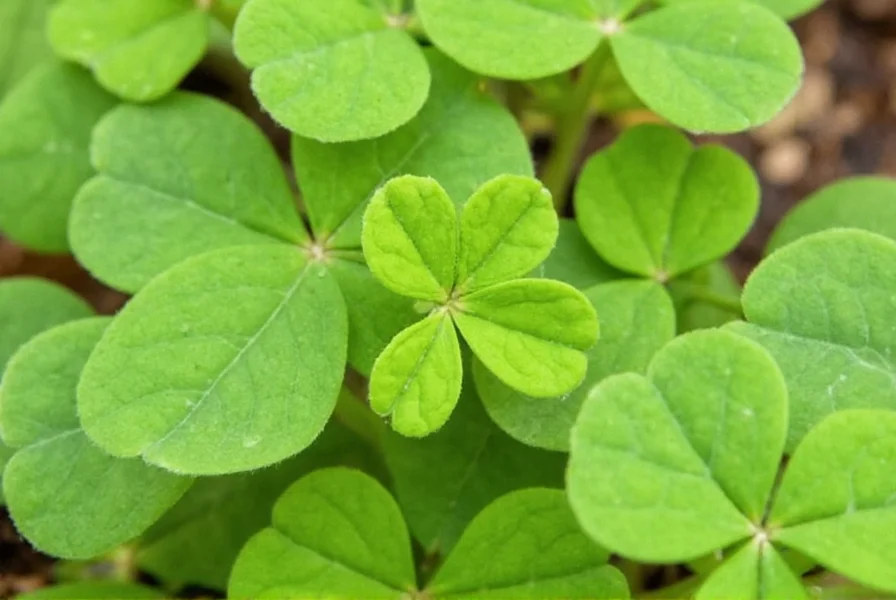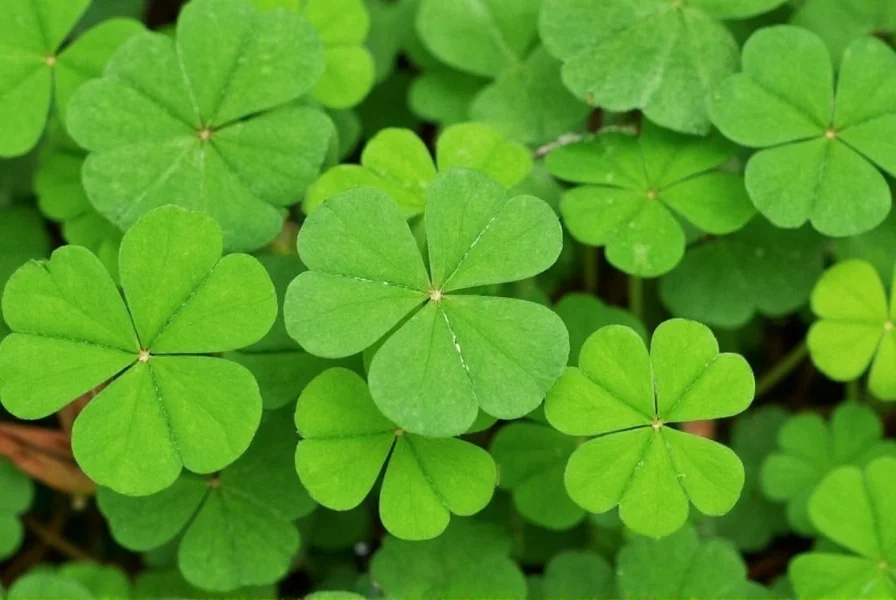Clover seed has gained significant attention from homeowners, farmers, and ecological restoration specialists seeking sustainable ground cover solutions. This versatile legume provides numerous environmental benefits while requiring less maintenance than traditional turf grass. Understanding the different varieties and their specific applications ensures you select the right clover seed for your particular needs, whether you're renovating a residential lawn, improving agricultural soil, or creating wildlife habitat.
Understanding Clover Seed Varieties
Not all clover seeds are created equal. Each variety possesses unique characteristics that make it suitable for specific applications. Selecting the appropriate type depends on your climate, soil conditions, and intended use.
White Clover (Trifolium repens)
White clover represents the most common variety used in lawn applications. This low-growing perennial features creeping stems that root at nodes, creating a dense mat. Its small white flower heads attract beneficial insects while providing excellent ground cover. White clover tolerates moderate foot traffic and maintains green color throughout the growing season, even during dry periods when traditional grasses go dormant. The standard variety typically grows 6-8 inches tall, while newer micro varieties stay under 4 inches.
Micro Clover
Micro clover has become increasingly popular as the best clover seed for lawns seeking a more uniform appearance. This specialized cultivar features smaller leaves and reduced flowering compared to standard white clover. Micro clover creates a denser, more grass-like turf that blends well with traditional lawn grasses. It requires less mowing and produces fewer flowers, addressing common concerns about bees and aesthetic preferences. Micro clover establishes quickly and tolerates moderate shade better than many traditional turf grasses.
Red Clover (Trifolium pratense)
Red clover serves primarily as an agricultural cover crop rather than a lawn alternative. This biennial plant grows taller (12-30 inches) with distinctive pinkish-purple flower heads. Red clover's deep taproot system breaks up compacted soil while fixing significant nitrogen. Farmers often incorporate red clover into crop rotation systems or use it as high-protein forage for livestock. While it can be used in lawn mixes, its taller growth habit makes it less suitable for mowed turf areas.
Crimson Clover (Trifolium incarnatum)
Crimson clover functions as an excellent annual cover crop, particularly in southern regions. Its vibrant red flowers make it visually striking while providing substantial nitrogen fixation. Gardeners often plant crimson clover in vegetable beds during the off-season to improve soil fertility. Unlike perennial varieties, crimson clover completes its life cycle in one growing season, making it ideal for temporary soil improvement projects. It germinates quickly in cool weather, establishing dense coverage before winter.
| Clover Variety | Height | Best Use | Soil Improvement | Foot Traffic Tolerance |
|---|---|---|---|---|
| White Clover | 6-8 inches | Lawn alternative, pasture | High | Moderate |
| Micro Clover | 3-4 inches | Lawn replacement | High | Moderate-High |
| Red Clover | 12-30 inches | Cover crop, forage | Very High | Low |
| Crimson Clover | 12-24 inches | Annual cover crop | High | None |
| Alsike Clover | 12-24 inches | Wet soil areas, forage | Moderate | Low |
Practical Benefits of Clover Seed
Understanding the specific advantages of clover seed for soil improvement helps explain its growing popularity among environmentally conscious land managers. Unlike synthetic fertilizers that require repeated applications, clover provides continuous soil enhancement through natural processes.
Nitrogen Fixation Process
As a legume, clover hosts rhizobia bacteria in root nodules that convert atmospheric nitrogen into plant-available forms. This natural process eliminates the need for synthetic nitrogen fertilizers. A healthy stand of white clover can fix 100-150 pounds of nitrogen per acre annually, significantly reducing fertilizer requirements for companion grasses in mixed lawns.
Drought Resilience
Clover's deep root system (reaching 18+ inches) accesses moisture unavailable to shallow-rooted turf grasses. During dry periods, clover maintains green color while traditional grasses turn brown and go dormant. This characteristic makes clover seed vs grass comparisons particularly relevant in regions experiencing water restrictions or frequent drought conditions.
Pollinator Support
Clover flowers provide essential nectar and pollen sources for bees and other beneficial insects. A single acre of clover can support thousands of pollinators throughout the growing season. This ecological benefit has gained importance as pollinator populations decline worldwide. Micro clover varieties offer a compromise for those concerned about frequent mowing to prevent flowering while still supporting pollinator health.

Planting Clover Seed Successfully
Proper establishment determines long-term success with clover. Many failures occur due to incorrect planting techniques rather than unsuitable varieties. Following these guidelines ensures optimal germination and establishment.
Timing Your Planting
When to plant clover seed depends on your climate zone. In northern regions, early spring (March-April) or late summer (August-September) provides ideal soil temperatures between 55-75°F. Southern regions benefit from fall planting (October-November) to avoid summer heat stress. Avoid planting during extreme temperatures, as clover seed requires consistent moisture during germination.
Soil Preparation
Clover prefers well-drained soil with pH between 6.0-7.0. Conduct a soil test before planting to determine necessary amendments. Remove existing vegetation through solarization or gentle tilling to reduce competition. Clover seeds are small and require good soil contact, so prepare a fine, firm seedbed without large clumps or debris.
Seeding Rates and Methods
For pure clover lawns, use 2-3 pounds of seed per 1,000 square feet. When mixing with grass seed, reduce to 1 pound per 1,000 square feet. Broadcast seed evenly using a handheld or broadcast spreader, then lightly rake to ensure soil contact. Avoid burying seeds deeper than 1/4 inch, as this reduces germination rates. Water gently but thoroughly after planting, maintaining consistent moisture until seedlings establish.
Maintenance Requirements
One of clover's greatest advantages is its low maintenance profile compared to traditional turf grass. However, some basic care ensures optimal performance.
Mowing Practices
Clover typically requires mowing only when it reaches 6-8 inches in height, significantly less frequent than conventional lawns. Micro clover varieties may need mowing just 3-4 times per season. Set your mower height to 3-4 inches to avoid damaging the growing points. Unlike grass, clover doesn't suffer from frequent close mowing, but allowing occasional flowering supports pollinators.
Fertilization Needs
Due to nitrogen fixation capabilities, clover rarely requires additional nitrogen fertilizer. In fact, excessive nitrogen promotes grass growth at the expense of clover in mixed lawns. A spring application of phosphorus and potassium based on soil test results may benefit establishment in poor soils. Established clover lawns typically thrive without additional fertilization.
Watering Requirements
During establishment (first 4-6 weeks), keep soil consistently moist but not saturated. Once established, clover demonstrates remarkable drought tolerance. Water deeply but infrequently during extended dry periods (3-4 weeks without rain), providing about 1 inch of water weekly. Established clover lawns typically require 30-50% less water than traditional turf grass.
Troubleshooting Common Issues
While generally trouble-free, clover may encounter certain challenges that affect establishment or performance.
Poor Germination
If clover seed germination rate appears low, check these factors: seed depth (too deep prevents emergence), soil moisture (inconsistent watering causes seed death), or seed age (older seeds have reduced viability). Clover seed maintains good germination for 1-2 years when stored properly. For best results, use fresh seed and ensure proper soil contact during planting.
Weed Competition
Young clover seedlings struggle against aggressive weeds. Control weeds before planting through solarization or careful herbicide use (avoid residual herbicides that affect legume establishment). Once established, dense clover stands naturally suppress many common weeds through competition. For persistent weeds, spot-treat with appropriate methods rather than broad applications that might damage clover.
Winterkill in Cold Climates
In northern regions, some clover varieties may experience winterkill during severe cold without snow cover. Micro clover generally shows better cold tolerance than standard white clover. Overseed in spring to repair thin areas, and consider leaving some leaf cover during winter for insulation. Proper fall fertilization with potassium improves cold hardiness.
Frequently Asked Questions
Does clover seed attract more bees than traditional lawns?
Yes, clover does attract more bees than traditional turf grass lawns, particularly when allowed to flower. A single clover plant produces multiple flower heads that provide abundant nectar and pollen. However, micro clover varieties produce fewer flowers, reducing bee activity while still providing some pollinator benefits. If bee concerns are significant, mow before flowers fully open (when petals first appear) to minimize attraction while maintaining the ecological benefits of clover.
Can I overseed existing grass with clover seed?
Absolutely. Overseeding existing lawns with clover seed creates a more resilient, low-maintenance turf. Prepare by mowing low and removing clippings, then aerate to ensure good seed-to-soil contact. The ideal overseeding rate is 1 pound of clover seed per 1,000 square feet. Water regularly until established. Clover will gradually fill in thin areas, reducing fertilizer needs while improving drought tolerance. This approach works particularly well with micro clover, which blends seamlessly with most common lawn grasses.
How long does it take for clover seed to establish?
Clover seed typically germinates within 2-3 days under ideal conditions (moist soil at 55-75°F). Visible growth appears within 7-10 days, with a dense stand establishing in 4-6 weeks. Complete establishment where clover dominates the turf usually takes one full growing season. During this period, maintain consistent moisture and avoid heavy foot traffic. Micro clover establishes slightly faster than standard white clover due to its smaller size and aggressive spreading habit.
Is clover seed safe for pets?
Yes, clover seed and established clover plants are generally safe for pets. White clover (Trifolium repens) poses no toxicity concerns for dogs or cats. Some pets may eat small amounts of clover without issues, though excessive consumption could cause mild digestive upset in sensitive animals. Unlike some traditional turf grasses treated with synthetic chemicals, clover requires minimal inputs, creating a safer environment for pets. Monitor pets that excessively consume any plant material, as this may indicate nutritional deficiencies.
Does clover seed work well in shady areas?
Clover tolerates partial shade better than many turf grasses but performs best with at least 4-6 hours of direct sunlight daily. Micro clover shows the best shade tolerance among clover varieties, making it suitable for areas with light to moderate shade. In heavily shaded areas (less than 3 hours of direct sun), consider alternative ground covers as clover will become thin and weedy. For mixed sun/shade lawns, overseed shady areas with shade-tolerant grass varieties while using clover in sunnier sections.











 浙公网安备
33010002000092号
浙公网安备
33010002000092号 浙B2-20120091-4
浙B2-20120091-4